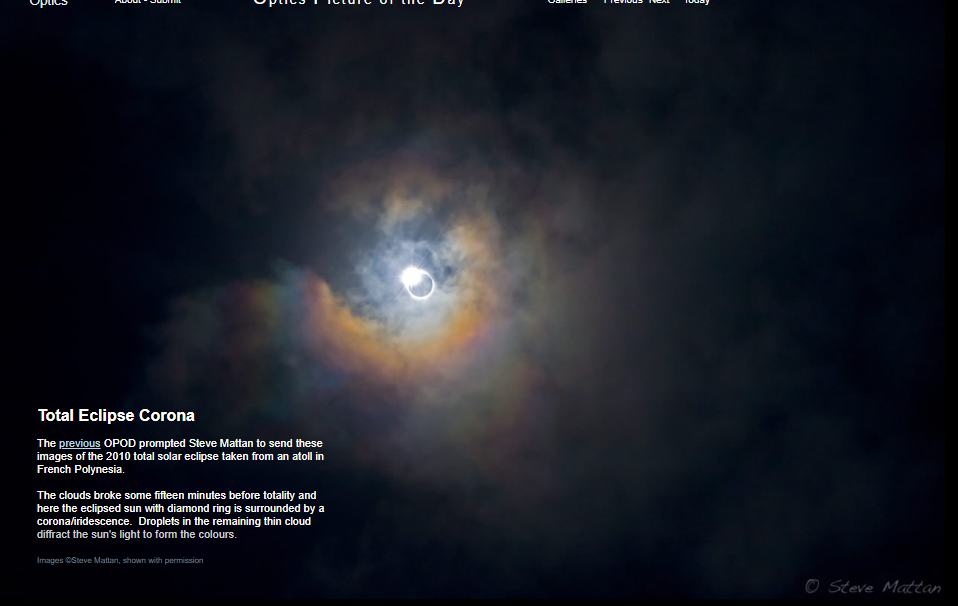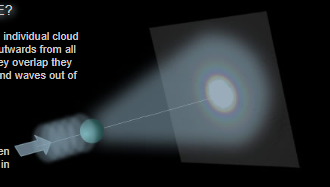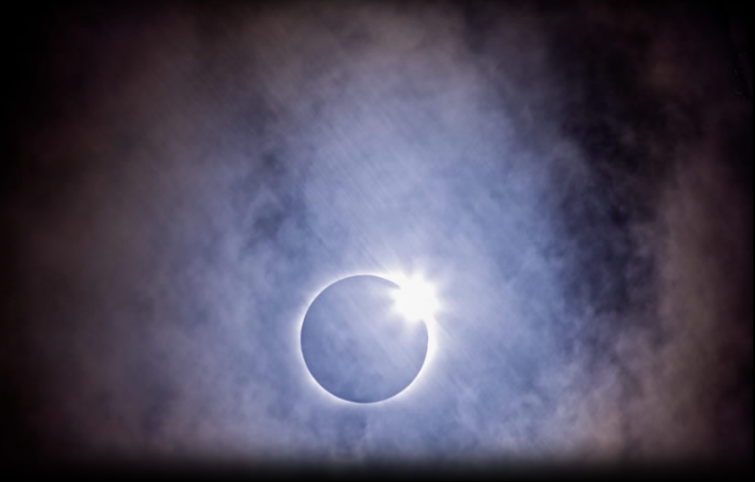Total Solar Eclipse Atmospheric Corona - OPOD
Total Solar Eclipse Atmospheric Corona - Exploring the Phenomenon
A total solar eclipse is a breathtaking celestial event that occurs when the Moon passes directly between the Earth and the Sun, completely blocking out the Sun's light. During this awe-inspiring moment, various atmospheric optics phenomena can be observed, including the atmospheric corona. In this article, we will delve into the fascinating world of the total solar eclipse atmospheric corona and explore its mesmerizing features.
Understanding the Corona and Iridescence
The atmospheric corona and iridescence are both optical effects produced by the diffraction of sunlight from individual cloud droplets. When sunlight interacts with these tiny droplets, scattered waves radiate outward from all points on the droplet's surface. As these waves overlap, they interfere with each other. Waves that are in-phase reinforce each other, while waves that are out of phase cancel each other out.
When the cloud droplets are nearly uniform in size, the overlapping patterns from individual droplets create a distinct ringed corona around the eclipsed sun. This corona appears as a series of concentric rings encircling the darkened disk of the Moon. However, if the droplet sizes vary within a cloud, the resulting patterns and colors become more irregular, giving rise to iridescence.
Unveiling the Splendor of the Total Solar Eclipse Atmospheric Corona
During a total solar eclipse, as the Moon perfectly aligns with the Sun, the corona becomes visible to observers on Earth. The corona is composed of ionized gases surrounding the Sun, extending millions of kilometers into space. This ethereal halo is typically hidden from view by the Sun's intense brightness but is revealed during the fleeting moments of totality.
The total solar eclipse atmospheric corona exhibits several captivating characteristics:
-
Diamond Ring Effect: Just before totality, a dazzling burst of sunlight known as the "diamond ring effect" can be observed. This occurs when the last sliver of sunlight peeks through a valley on the Moon's surface, creating a brilliant flash resembling a diamond ring.
-
Ringed Corona: As the Moon completely covers the Sun, the corona emerges, appearing as a delicate ring of pearly white light encircling the Moon's silhouette. This ring is composed of plasma and magnetic fields, creating a mesmerizing display of ethereal beauty.
-
Streamers and Plumes: Extending outward from the ringed corona are luminous streamers and plumes that emanate in various directions. These streamers are caused by the Sun's magnetic field, which shapes the corona and gives it its distinctive appearance.
-
Irregular Structure: The corona's structure is not uniform but rather exhibits irregularities and asymmetry. These variations arise from the complex interplay between the Sun's magnetic field and the surrounding plasma, creating intricate patterns that mesmerize observers.
Shadow Bands and Atmospheric Density Fluctuations
In addition to the atmospheric corona, another intriguing phenomenon known as shadow bands can be observed during a total solar eclipse. Shadow bands are subtle, wavy lines that appear to dance and ripple across the ground just before and after totality. These bands are caused by atmospheric density fluctuations that occur at higher altitudes.
Typically, shadow bands are projected onto the Earth's surface, but under certain conditions, they can be observed on lower cloud layers. In these cases, an intermediate-level cloud acts as a translucent screen, allowing the shadow bands to be visible. This creates a captivating interplay between the shadow bands and the surrounding cloud formations, adding an extra layer of intrigue to the eclipse experience.
Embracing the Wonder of Total Solar Eclipses
Total solar eclipses provide us with a unique opportunity to witness extraordinary atmospheric optics phenomena. From the ethereal corona and its intricate patterns to the mesmerizing dance of shadow bands, these celestial events captivate both seasoned astronomers and casual observers alike.
As we gaze upon the sky during a total solar eclipse, we are reminded of the immense beauty and complexity of our universe. These fleeting moments of celestial alignment allow us to marvel at the wonders of atmospheric optics and deepen our understanding of the intricate interactions between light, clouds, and the Earth's atmosphere. So, the next time a total solar eclipse graces our planet, make sure to embrace the wonder and immerse yourself in the awe-inspiring spectacle that unfolds before your eyes.

Total Eclipse Corona
The previous OPOD prompted Steve Mattan to send these images of the 2010 total solar eclipse taken from an atoll in French Polynesia.
The clouds broke some fifteen minutes before totality and here the eclipsed sun with diamond ring is surrounded by a corona/iridescence. Droplets in the remaining thin cloud diffract the sun's light to form the colours.
Images ©Steve Mattan, shown with permission
CORONA OR IRIDESCENCE?
Both are produced by diffraction from individual cloud droplets. Scattered waves radiate outwards from all points on the drop surface. Where they overlap they interfere. Waves in-phase reinforce and waves out of phase are destroyed.
When all the drops are of nearly the same size the overlapping patterns from individual drops are not blurred out and there is a ringed corona. When the size changes from place to place in a cloud the pattern and colours become more irregular. This gives iridescence.

Below:
Shadow bands from higher up atmospheric density fluctuations are projected onto lower cloud. Usually they are seen on the ground but here an intermediate level cloud layer is acting as a translucent screen.

Note: this article has been automatically converted from the old site and may not appear as intended. You can find the original article here.
Reference Atmospheric Optics
If you use any of the definitions, information, or data presented on Atmospheric Optics, please copy the link or reference below to properly credit us as the reference source. Thank you!
-
<a href="https://atoptics.co.uk/blog/total-solar-eclipse-atmospheric-corona-opod/">Total Solar Eclipse Atmospheric Corona - OPOD</a>
-
"Total Solar Eclipse Atmospheric Corona - OPOD". Atmospheric Optics. Accessed on April 20, 2024. https://atoptics.co.uk/blog/total-solar-eclipse-atmospheric-corona-opod/.
-
"Total Solar Eclipse Atmospheric Corona - OPOD". Atmospheric Optics, https://atoptics.co.uk/blog/total-solar-eclipse-atmospheric-corona-opod/. Accessed 20 April, 2024
-
Total Solar Eclipse Atmospheric Corona - OPOD. Atmospheric Optics. Retrieved from https://atoptics.co.uk/blog/total-solar-eclipse-atmospheric-corona-opod/.